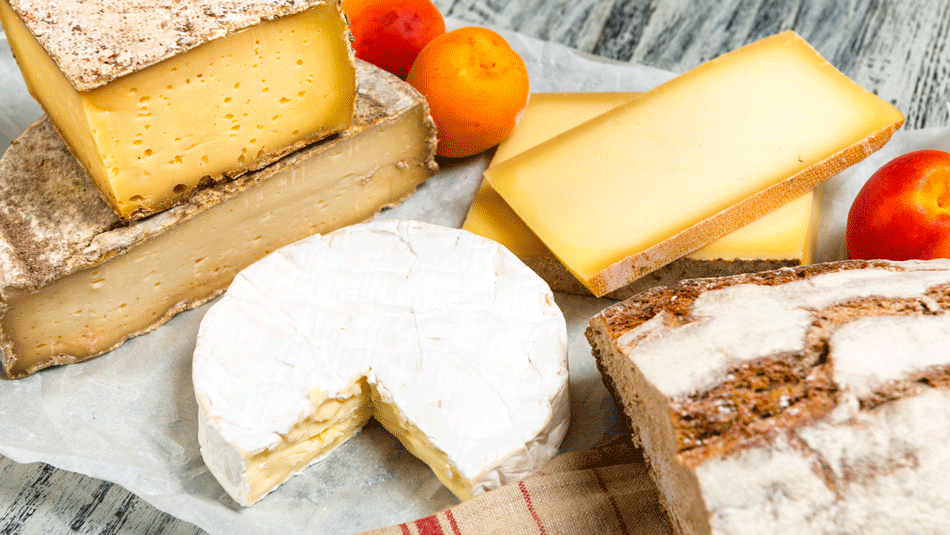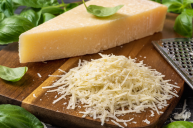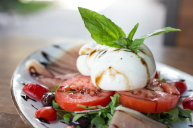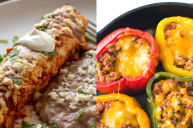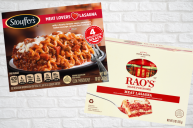If I could choose a favorite food group, it would be cheese. I love cheese. The strong, the creamy, the crumbly, it's the perfect food to top on everything or eat as is. Even a meal as simple as a good crusty baguette and quality cheese is enough to satisfy my hunger. Come to think of it, it's probably what I crave most.
When it comes to cheese though, it is not one cheese fits all. Oh no. There is a specific type of cheese meant for every situation. What you would top on your salad is usually far different than what you would put on top of your chili. Like spices in your pantry, there are a variety of cheeses you should always keep on hand in the fridge. From the hard to the soft, these are the four types of cheese you should always have, you know, just in case.
1. A hard cheese
Every kitchen needs a variety of hard cheeses - firm cheeses that are aged two months or longer. Why? Because there are endless meals that are best paired with each kind of hard cheeses. Each hard cheese has its own distinct flavor that makes it truly unique. When you bite into sharp cheddar for instance, you get a completely different flavor that you would from say, biting into a nutty asiago. The key with hard cheese is to pair it according to the foods needs.
If you're whipping up a meal that requires a melty cheese like grilled cheese, chili, sheet pan nachos, or a quesadilla, you're going to need a hard cheese. Cheese like cheddar, Colby, Monterey jack, pepper jack, gouda, and Swiss cheese work best in this situation. They range from sharp to mild, which is why they are excellent to have on hand come time for dinner.
https://www.instagram.com/p/BggnTdNFTt_/?tagged=gouda
If you're making pasta dishes, roasting vegetables, or want to add a little bit of sharpness to any meal, you'll need a salty cheese like parmesan, asiago, or romano. These cheeses add just the right touch to any meal, without having cheese become the main show. Try eating a bowl of pasta without a touch of this and it's like eating Mexican food without hot sauce - simply wrong.
A good rule to remember for hard cheese is if the recipe requires a grated cheese, then you'll need a hard cheese on hand.
2. A soft cheese
Soft cheeses - cheeses with a higher moisture content made within a short time - are perfect for adding complementary flavors, enhancing a meal, or becoming the meal itself. Think about the last time you made an appetizer for your guests. Did you do some kind artichoke dip? Or what about a baked brie? No doubt when you whipped up your hors d'oeuvre, you used some kind of soft cheese.
Soft cheese are as versatile as they are flavorful. It wouldn't be a margarita pizza without buffalo mozzarella or a bagel without spreadable cream cheese. Strawberries and ricotta topped with a balsamic reduction make for an excellent dessert you'll crave all season long. And what about sandwiches? A fresh goat cheese or semi-soft cheese cheese like Havarti, muenster, and fontina all taste great. Soft cheese also melt well which is something to keep in mind for what you're making.
3. A crumbly cheese
When it comes to salad, you've got to have the crumbles. Crumbly cheese that is. The bite of blue cheese, the sharpness of gorgonzola, the tang of fresh feta, these all can add complementary yet contrasting flavors that make a salad pop. The key here with crumbly texture cheeses is they enhance dishes, but tend to not be the main event themselves.
The strong flavors of crumbly cheese are best to use when a meal either needs more depth or needs to cut through the flavors of fat. The saltiness of cojita is amazing in pork tacos, blue cheese makes for excellent dip when paired with spicy hot chicken wings, and even a steak tastes amazing topped with caramelized onions and gorgonzola.
The key here is the boldness of the cheese matches the boldness of the meat. Next time you have a crumbly cheese on had, try it in a variety of dishes. I bet you'll find some new amazing flavorful combinations that make your meal incredible.
4. A guilty pleasure cheese
Sometimes, you just want to munch on cheese. No bread, no fruit, no meats, no nothing to go with it. You just want to eat cheese. That's exactly why guilty cheese was invented. American, Italian, or French, different cheeses from all over make some of the best guilty pleasure cheese.
Whether you prefer the robustness of Dubliner, the sharpness of Vermont white cheddar, or the creaminess of port salut, you have to have a guilty pleasure cheese on hand. While all the other cheeses are busy making dinner, topping salads, or being turned into dessert, guilty cheeses have one purpose and one purpose alone, to be eaten as is.
Imagine you reach into the refrigerator, your tastebuds salivating with the anticipation of biting into your favorite cheese, and all you have is a wedge of parmesan or a few slices of Swiss you've been saving for lunches.
Nothing can be more disappointing. Do yourself a favor and when you do your grocery shopping, take this into account. I can't tell you how many times I think we're okay on the cheese supply and suddenly I'm out of my favorite munch worthy cheese. If you're a cheese lover, you'll agree, you simply can't go without guilty cheese.
Don't Forget About the Cheese Board
To make the ultimate cheese board, don't just choose one of these cheese types, cheese them all. A few quality cheese from each category paired with a crusty baguette, salty olives, wine jelly, salty cured meats, and a beer to pair will be the best cheese meal you could possibly imagine. And reason enough to keep all of these cheese on hand.
